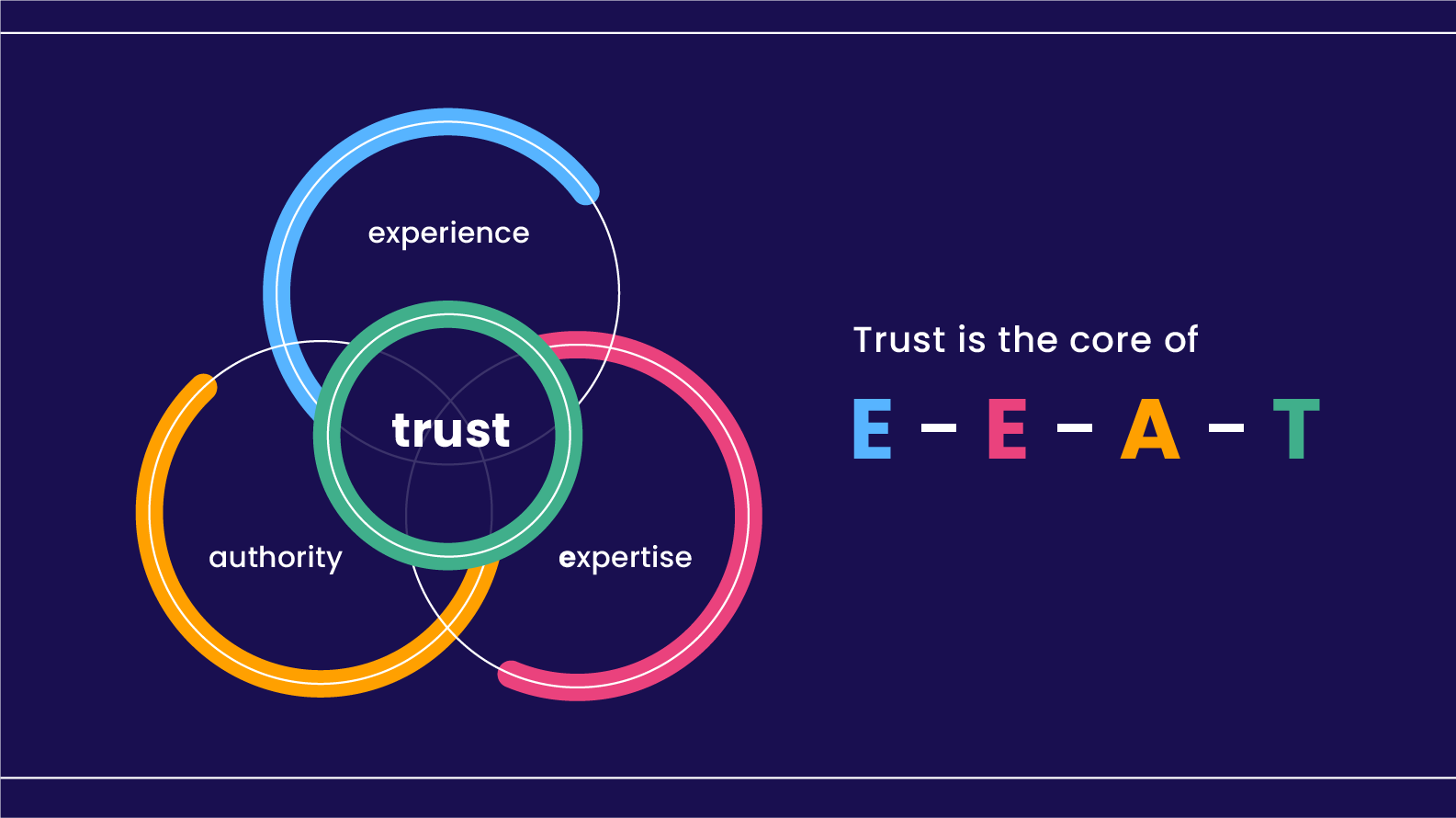
- Posted by : sanat
- Uncategorized
Cracking Google’s E-E-A-T Framework: What Every Business Know
If you’re in the game of digital presence—whether you’re running an enterprise-grade site, coding up content hubs, or just trying to make your B2B brand Google-friendly—understanding E-E-A-T is non-negotiable.
No, it’s not the latest AI model or a new protocol. It’s Google’s framework for deciding if your content deserves to be seen or shoved down the SERP abyss.
Let’s break down what E-E-A-T is, why it’s essential, and how to engineer it into your SEO and content strategy like the tech pro you are.
What is E-E-A-T?
Experience, Expertise, Authoritativeness, and Trustworthiness—together, they form the quality scorecard Google uses when its algorithms (and human evaluators) decide if your content is credible or just noise.
Originally launched as E-A-T, Google added the extra “E” (Experience) in 2022 to reflect how much firsthand knowledge matters—especially for YMYL (Your Money or Your Life) topics like health, finance, or cybersecurity.
Why It Matters (Even More Than You Think)
This isn’t just SEO jargon—it’s the foundation of how Google ranks content in competitive niches. If you’re a B2B company trying to break out of content purgatory, E-E-A-T is your way in. Here’s why:
- Better Rankings: Content ticking all four E-E-A-T boxes is more likely to show up at the top of search results.
- More Engagement: People spend more time on content they trust. Google notices.
- More Shares & Backlinks: When you’re seen as authoritative, others cite you—free PR.
Snag Featured Snippets: The holy grail of organic visibility? E-E-A-T content is more likely to land there.
The Four Pillars of E-E-A-T (Decoded for Digital Pros)
1. Experience
Think: boots on the ground. Google now values real-life experience as much as it does academic or professional credentials.
💡 Example: A sysadmin blogging about incident response steps during a real-world DDoS attack? That’s high experience value.
Pro Tips:
- Share first-hand insights from deployments, projects, or tests.
- Include screenshots, logs, or case studies.
- Use actual scenarios, not generic fluff.
2. Expertise
This is your depth of knowledge—credentials, years in the field, specialisations. For B2B? Think solution architects, product managers, or CTOs weighing in.
💡 Example: A DevOps lead explaining how to optimise CI/CD pipelines across hybrid cloud infrastructure? Certified expertise.
Pro Tips:
- Have technical experts create or at least approve content.
- Add bylines with credentials (think “John Doe, CISSP, 15+ yrs in Cybersecurity”).
- Reference white papers, standards (ISO, NIST), or respected industry sources.
3. Authoritativeness
This one’s about how others see you. Do peers and major sites link to or cite you? Do you rank as a go-to voice in your niche?
💡 Example: If your Kubernetes security post gets shared by CNCF or linked by GitHub repos—that’s serious authority juice.
Pro Tips:
- Publish on LinkedIn, Medium, or partner platforms to extend reach.
- Guest blog or co-author with known experts.
- Secure backlinks through original data or tool releases (free scripts, cheat sheets, etc.).
4. Trustworthiness
This is about site integrity—can users trust your content, data security, and intentions?
💡 Example: If your platform stores customer data, and your privacy policy is buried, your trustworthiness score tanks.
Pro Tips:
- Use HTTPS. Always.
- List your real company address, team bios, and customer support contacts.
- Include updated privacy policies and terms.
Avoid clickbait. Present clear, verifiable facts.
How to Engineer E-E-A-T into Your Content Strategy
Let’s get practical. Here’s how B2B companies (especially those in tech, SaaS, or consulting) can bake E-E-A-T into their web presence:
🧠 Build an “About Us” Page That Doesn’t Suck
Share your company mission, leadership bios, partnerships, and client wins. Don’t just say “We’re passionate about innovation.” Prove it.
🤝 Collaborate with Real Experts
Feature your CTO in a blog. Interview your head of data. Co-author with customers. Real names, real knowledge.
🔁 Keep Content Fresh
No one trusts a guide from 2018 on “Top Cloud Trends.” Update your cornerstone content every 6–12 months.
🔗 Master Internal Linking
Use a hub-and-spoke structure—build authority on a topic by creating a central page that links out to deep dives.
🌐 Monitor Your Digital Reputation
Set up alerts for reviews, mentions, and backlinks. Respond to feedback. Don’t ghost your digital audience.
📍 Optimise Local & Niche Signals
Especially for B2B service providers—use Google Business Profile, include industry certifications, and get listed in niche directories.


